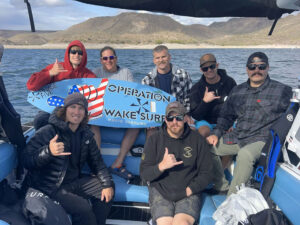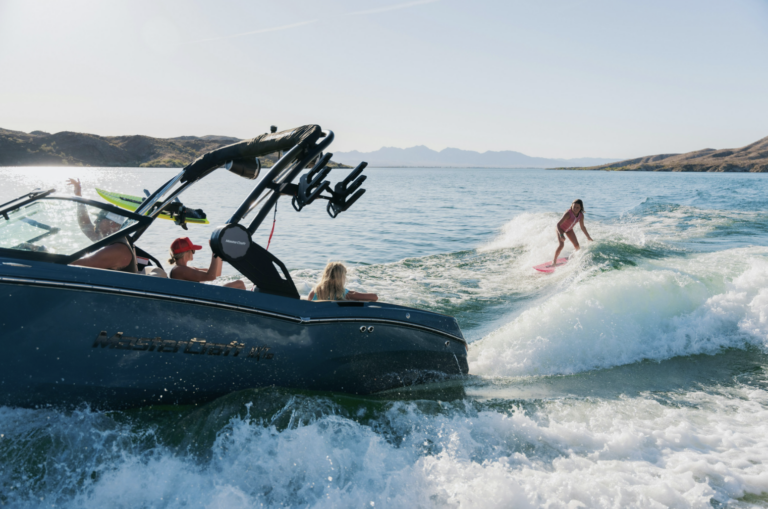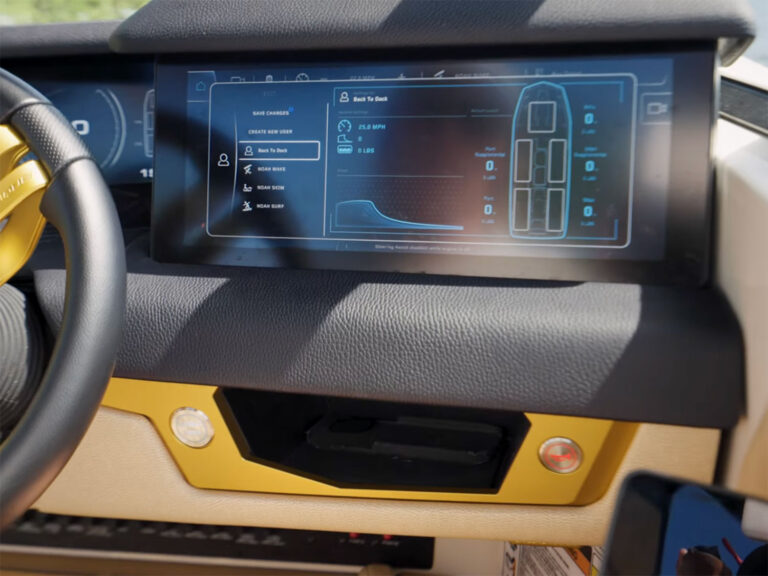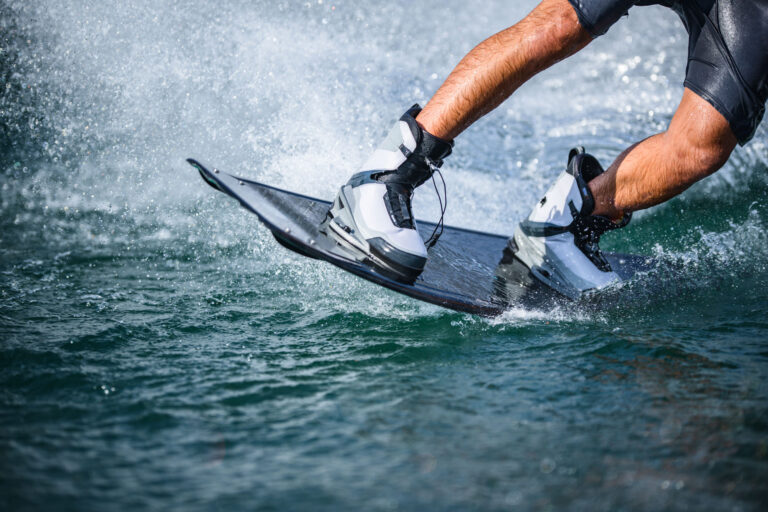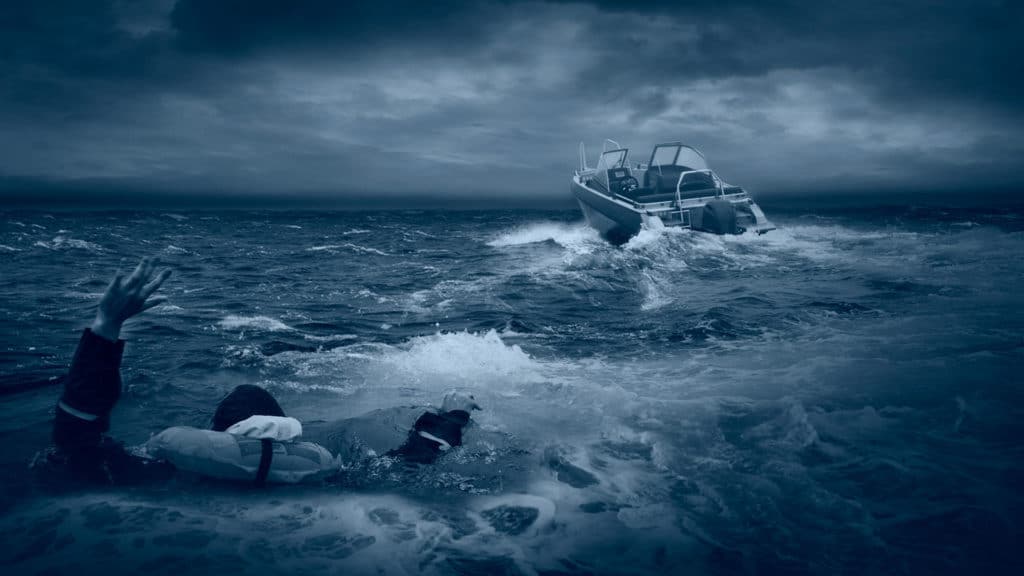
Under a new federal law effective April 1, 2021, those piloting boats less than 26 feet in length are required to use their engine cut-off switches (ECOS) much of the time. That means wearing a lanyard—aka ECOS link—while at the wheel. (Formerly referred to as, “kill switches,” the term engine cut-off switch, or ECOS, is the preferred nomenclature, whether referring to engine-cut-off switches operated by a physical lanyard or any of several electronic solutions.)
Specifically, Section 8316 of the National Defense Authorization Act of 2021 passed by Congress requires individuals operating recreational vessels less than 26 feet in length with an engine capable of 115 pounds of static thrust (3 hp) or more to use ECOS links. However, this law applies when the primary helm is not in a cabin and when the boat is operating on plane or above displacement speed. Situations in which an ECOS link would not be required include docking, launching and loading on a trailer, trolling and operating in no-wake zones.
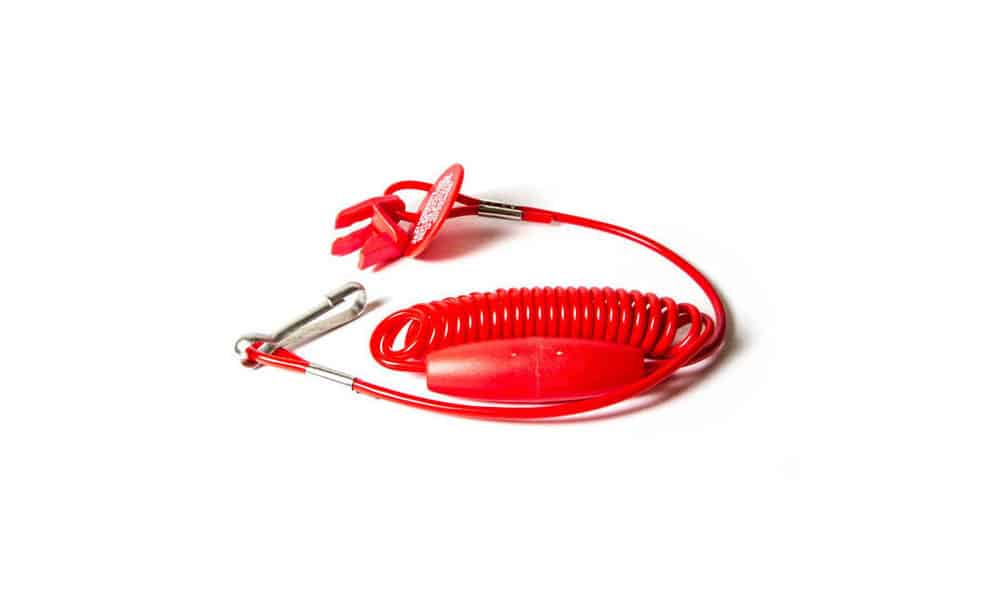
Since December 2019, ECOS links have been US Coast Guard-required equipment on recreational powerboats less than 26 feet. In reality, the vast majority of recreational powerboats of this size have for decades come with ECOS links to help prevent runaway vessels if the helmsman goes overboard. Seven states already have similar laws, including Alabama, Arkansas, Illinois, Louisiana, Nevada, New Jersey and Texas. Forty-four states have the same kinds of regulations for personal watercraft.
Read Next: One Boater’s Real-Life Engine Cut-Off Story
“The Coast Guard believes that the overwhelming majority of recreational vessels produced for decades have had an ECOS installed,” said agency spokespersons in a press statement. “So, this new use requirement simply obligates recreational vessel operators to use critical safety equipment already present on their boat.”
When an ECOS is attached to the helmsman, it shuts off the engine(s) if he or she is thrown from the wheel. The ECOS link is often-and historically-a lanyard with a clip. However, wireless ECOS from companies such as Fell Marine and Mercury Marine have recently been developed and are also approved for use by the Coast Guard. These use an electronic “fob” that is worn by the helmsman and shuts down propulsion when it is submerged in water.
Read Next: Learn About Electronic ECOS Solutions
The new law will be enforced by the Coast Guard in federal navigable waterways. Alexandria, Virginia-based BoatUS, the nation’s largest boat-owner organization, expects most states that don’t already have such laws on the books will amend their regulations to match federal law over the coming years. Under the federal law, operators who fail to follow the new requirement can face civil penalties up to $100 for the first offense.
Key Takeaways
Boaters operating boats less than 26 feet LOA must use an ECOS link if one is installed.
Boats built before 2020 may not have been required to have an ECOS installed but most have ECOS aboard anyway.
Boats less than 26 feet in length that generate more than 115lbs of static thrust (~ 2-3hp) and were built beginning in January 2020 must have a ECOS installed.
If the boat was built in January 2020 or later, the Engine Cut-Off Switch systems must be maintained in working condition for the life of the boat. Just like navigation lights or exhaust blowers.
Boaters are not required to use ECOS if:
- The boat is operated from an enclosed helm.
- The boat is off plane and not exceeding hull speed
- During docking maneuvers or while at idle
- The vessel does not have an engine cut-off switch and is not required to have one.
To learn more, visit the Coast Guard website.



